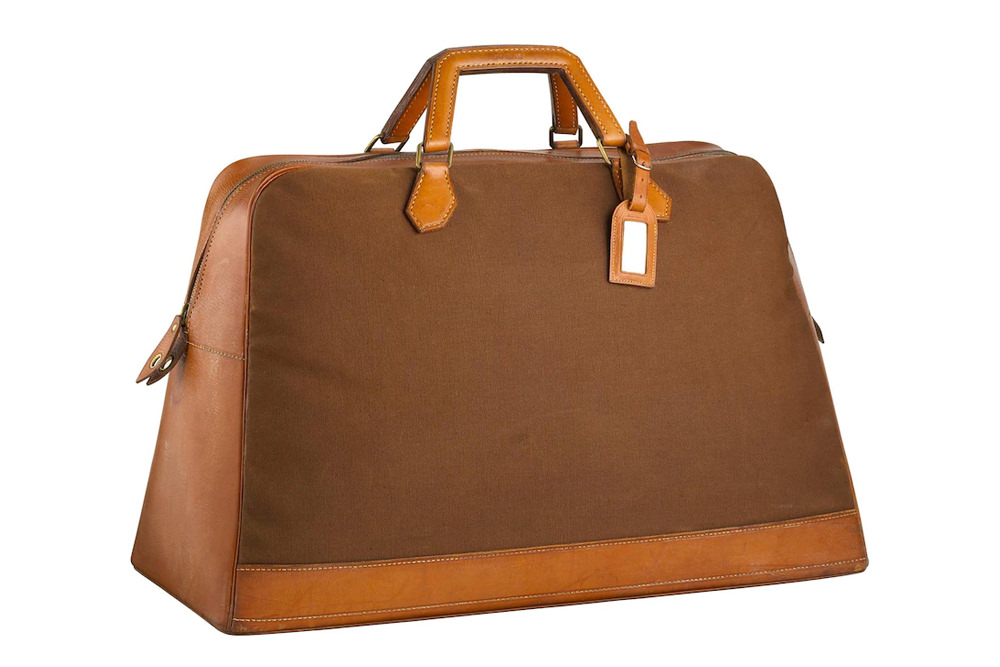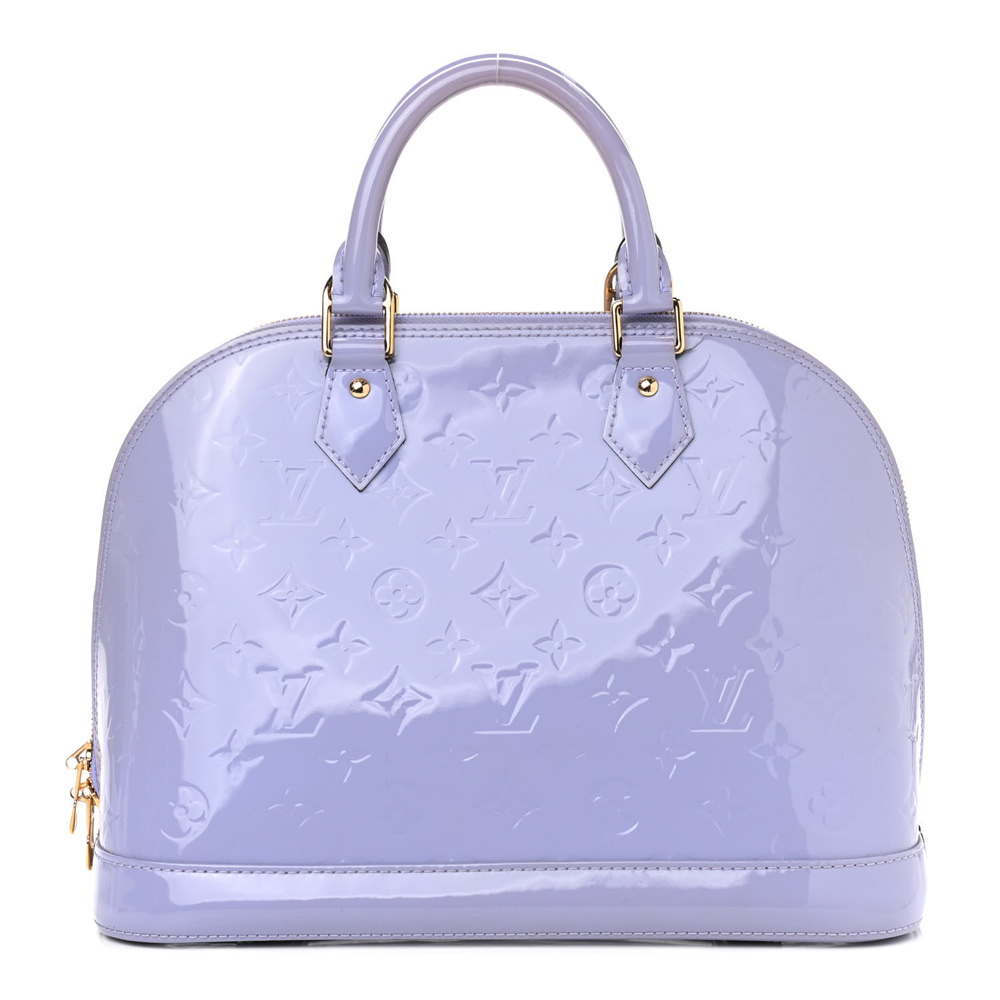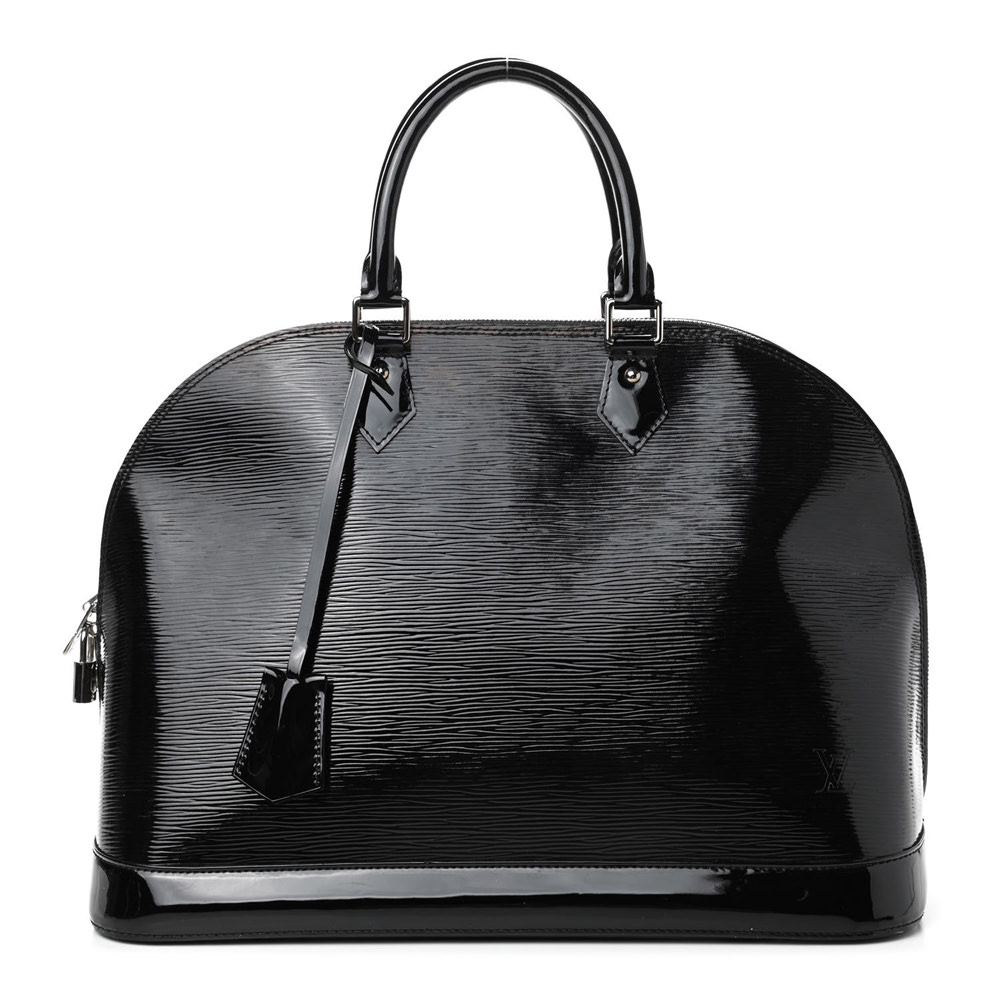Every designer has got one – for Prada, it’s the Saffiano Promenade; for Gucci, it’s the Ophidia top handle, and for (Yves) Saint Laurent, it was the Muse. You know what I’m talking about. It’s the dome-shaped bag – possibly one of the handbag world’s oldest and most well-established silhouettes. And like all storied purses, the dome bag’s history is embroiled in intrigue. But if we had to single out one particular bag that remained front and center throughout the length of this controversy, it would be – you guessed it – the Louis Vuitton Alma – perhaps the most iconic and well-known dome bag of them all.
Now, what exactly constitutes a dome purse? It’s a bag silhouette with a rounded top fully zipped from one end to another and carried by two top handles. Some feature rolled handles (called the “Toron”) for added elegance, while some, like the Blue Monogram Double Jeu Neo-Alma, have thick, flat ones for a more casual, rocker-chic feel. But it can’t be argued that the dome purse, slim, sleek, and ultra ladylike, has become an undeclared staple of sorts for nearly every fashion house in the market (as much as you deny it, Chanel, I know there are vintage ones from your collection!). The bigger sizes make the perfect day bag – structured but spacious – while its smaller variations are fantastic for night-outs.

.product {
margin: -20px auto 3rem;
padding: 0 0 10px;
display: flex;
background-image: linear-gradient(to right,#222 0,#222 25%,transparent 25%);
background-repeat: repeat-x;
background-position: 0 bottom;
background-size: 2px 1px;
max-width: 700px;
}
.product_name a { color: #222; text-decoration: none; }
.product a { text-decoration: none; }
.product a:hover { text-decoration: underline; }
.product_name {
flex: 1 0 0;
padding: 5px 10px 5px 10px;
font-size: 1.2rem;
line-height: 1.2;
}
.product_meta {
display: block;
color: #757575;
padding-left: 2px;
padding-top: 6px;
font-size:1rem;
}
.product_price {
background-image: linear-gradient(to top,#222 0,#222 25%,transparent 25%);
background-position: left 0;
background-repeat: repeat-y;
background-size: 1px 2px;
display: flex;
text-align: right;
font-size: 1.4rem;
max-width: 50%;
line-height: 1.2;
}
.product_price span { padding: 0px 20px; align-self: center; }
@media only screen and (max-width:440px) {
.product_name, .product_price { font-size: 2rem; }
}
And it is with these qualities that the Louis Vuitton Alma steals the show – it takes full advantage of the versatility of the dome style to bring you the most gorgeous set of purses imaginable! Need a one-size-fits-all handbag for luxury newbies? The Alma PM in Monogram canvas is the perfect starter’s piece. Intimidated by the Vachetta handles? Opt for Damier Ebene instead. Love the Vachetta? Treat yourself with the Limited Edition Natural Vachetta Alma (yum!). Need a pop of color instead? The Epi line’s selection, new and pre-owned combined, is practically endless!
So how did this modern house staple first come to be? The Louis Vuitton website describes it as such,
“The Alma’s ancestry can be traced to the end of the 19th century, with its most direct forebears taking the rather humble form of a linen bag and a night bag – two simple canvas pouches designed to keep trunk drawers tidy. In 1901, their functions merged, giving rise to the Steamer bag, the essential companion of transatlantic passengers. Its elegant trapezoidal design concealed discreet compartments to separate clean linen from that already worn.”
So, like its equally storied (but slightly more popular) sister, the Speedy, the Alma too was a shrunk-down version of a travel bag (possibly the Steamer or an equivalent from then). But, while the Speedy was famously commissioned by Audrey Hepburn, legend has it that the Alma was a special order made in 1925 by Gaston Louis Vuitton for none other than Coco Chanel – the scandal!
Back then, however, it wasn’t called the Alma. In fact, the details of the earliest Alma encompass a grey area between actual evidence and speculation. Mademoiselle Chanel’s rumored presence in the picture certainly doesn’t make things any clearer (I’ve searched high and low for a picture of the lady with the bag, but with no luck, although this forum might be helpful). What is certain is that Chanel’s (or at least, a very similar) version didn’t go into official production until 1934, and that was called the Squire Bag.
In 1955, the Squire was adapted to make an even slimmer, era-appropriate purse called the Champs-Élysées, while another adaptation around the same time, called the Marceau, resembled a dome-like briefcase/city bag more than a purse. It is likely that both of these looked very different from the Alma as we know it today – possibly having been made with plain brown canvas, and the Marceau made during this time wasn’t the same Marceau you see nowadays, which is more of a crossbody messenger. LV is guilty of recycling names (ahem… The Coussin). But before long, both were discontinued, and only in 1992 was the shape was introduced in signature Monogram canvas (complete with the signature padlock-key attachment) and named after the Place de l’Alma in Paris where the historic Avenue Montaigne (with its own eponymous bag from LV) meets the Seine River.

And owing to its classic shape, the Alma was a popular contender for experimentation from the very beginning. Not only was it made available in every shade of the rainbow in Epi leather and the irresistibly shiny Vernis, but limited editions of the Alma were also released with every hot collaboration LV did in the 2000s, from Stephen Sprouse’s graffiti and roses and Takashi Murakami’s Multicolore Monogram and Cherry Blossom to the Paris Hilton and Kim Kardashian-famed Miroir Mirror version.

Now, the fashion crowd, in general, has an obsession of sorts towards the bag that supposedly “did it first,” and at this point, it’s no secret that imitation has been rampant in the handbag world. So, though the Louis Vuitton Alma has been in existence long enough to safely say that most of dome purse variants we see nowadays have spawned from it, was it the first to introduce the shape? Well, it’s unlikely, with the Hermès Bolide being the candidate that possibly came first. Made by Emile Hermès in 1923 as the first-ever zippered bag from the house of Hermès after discovering the zipper in Canada (it was unheard of in Europe), the Bolide too was a special order, but for Ettero Bugatti. It is said that the bag was made following the launch of Bugatti’s new car, the Torpedo, and even shaped like its front grill (also a dome shape)!

Hence, with all the mystique surrounding the Alma’s inception and the Bolide’s celebrated past, it is likely that the Alma wasn’t the first dome bag. But nevertheless, it’s a lot more well-known than the Bolide and a much wiser starting point for luxury buyers given its timeless aspect as well as Louis Vuitton’s unmistakable monogram. And at the end of the day, does it really matter which came first? The Alma is an icon in its own right, and as a veteran that has been in the market for nearly a century (under one name or the other), it deserves more love from everybody.
I’ll start; my favorite Alma is the GM in Electric Black Epi. What’s yours?